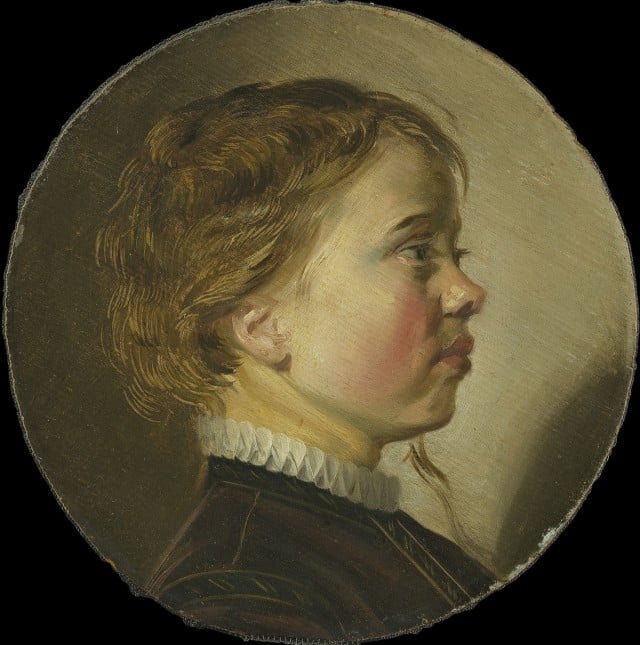
This lovely picture was painted around 1630 by the great Haarlem artist Judith Leyster. Maybe its most notable feature is that it is just 7 ½ inches wide, which makes it about typical of all the works in a fascinating exhibition called “Small Treasures: Rembrandt, Vermeer, Hals and Their Contemporaries”, organized by the scholar Dennis Weller for the North Carolina Museum of Art, in Raleigh, and moving on to the Birmingham Museum of Art in February. I don’t normally talk about shows and works I haven’t seen in the flesh, but this exhibition has a lovely conceit that makes me feel justified: All its works are small enough that they can be reproduced at life-size in the catalog.
It turns out that the size of these works is about more than a clever curatorial conceit. They help back-up an argument I’ve been building for years, about how Dutch art lovers had a much closer, more hands-on approach to art viewing than we do, as we contemplate pictures on walls and behind ropes in museums. The paintings in “Small Treasures” have to be seen from quite close to make any aesthetic sense; portrayals exists that depict their Dutch owners holding them up at much less than arm’s length. Little details in the Leyster, like the child’s stray lock of hair and its wonderful almost-profile pose–so much better than full profile–would be lost at any greater distance. And I think that the necessary viewing habits for these little pictures can be taken as a model for the normal, “embodied”, nose-to-the-oil-paint approach to art viewing that once ruled more generally in the Netherlands. (This matters because the depicted space in paintings changes utterly as you get close; it becomes far more convincing and resonant, and far more sensitive to small changes in a viewer’s position.)
Little pictures like Leyster’s also strike a wonderful, important balance between the twin poles of Dutch painting, which hovered between a realism built around the extreme, finicky polish of artists such as Gerard ter Borch and maybe Vermeer, both in this show, and another realism built around the broadest of brushwork, as practiced by Frans Hals, who also finds a place in Raleigh. (Rembrandt moved from fine to broad brushwork across the course of his career; both his approaches are on view in the exhibition.) In painting tiny works such as those in “Small Treasures”, no artist could be so finicky as to hide all traces of brushwork: Peruse these pictures from as close as they invite, and even ter Borch becomes a bit Hals-ish. On the other hand, figures such as Hals simply did not have the room, in such tiny paintings, to let loose as they might have otherwise: See these pictures from any distance at all, and even the brushwork of a Hals starts disappearing.
That means that these little paintings, rather than being a curious sideline in Dutch art, may encapsulate some of its most important tendencies and tensions.
For a full survey of past Daily Pics visit blakegopnik.com/archive.